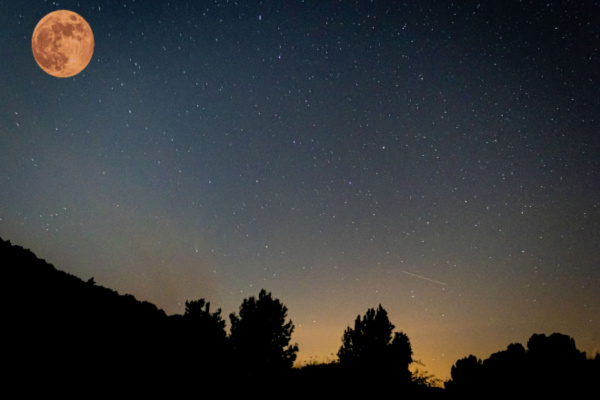 Why the June Strawberry Moon Will Look a Bit Different this Year
Why the June Strawberry Moon Will Look a Bit Different this Year
June’s full moon will rise soon but not by much. This year’s Strawberry Moon is set to be one of the lowest full moons since 2006, according to EarthSky.
A “lunar standstill” is affecting how the moon appears. That can also make it look more red or pink this year because of factors like the Saharan dust in the air or wildfire smoke from Canada.
What is a Lunar Standstill?
A lunar standstill, also known as a lunistice, occurs when the Moon reaches its furthers north or south position in the sky during the course of a moonth. This happens due to the Moon’s tilted orbit and the Earth’s rotation, causing a cycle of extreme moonrises and moonsets. These standstills are not actually “still,” but rather represent the limits of the Moon’s monthly arc across the sky.
When will the Strawberry Moon reach its peak?
According to the Farmer’s Almanac, the strawberry moon will reach peak illumination at 12:46am PT, 2:46am CT, and 3:46am ET on Wednesday, June 11. The moon will also appear bright and full on Tuesday (June 10) and Thursday (June 12).
Why is the June full moon called the Strawberry Moon?
The “Strawberry Moon” is the colloquial name for the full moon that occurs in June. This name originates from Native American tribes, particularly those in the northeastern United States, who used the June full moon to mark the peak ripeness and harvest season for wild strawberries. The Old Farmer’s Almanac began publishing these Native American names for full moons in the 1930s, and the “Strawberry Moon” name has since become widely recognized.
While the name suggests a red or pink moon, the Strawberry Moon may not appear with those colors. Instead, the moon’s appearance can be influenced by atmospheric conditions, especially when it’s close to the horizon at moonrise or moonset, which can give it a subtle orange or reddish hue.
When is the next full moon?
Full moons normally happen 29.5 days apart and once a month. The next full moon will be the Buck Moon, which appears on Thursday, July 11, 2025.
—
Photo Credit: Ivan Morato photography / Shutterstock.com







